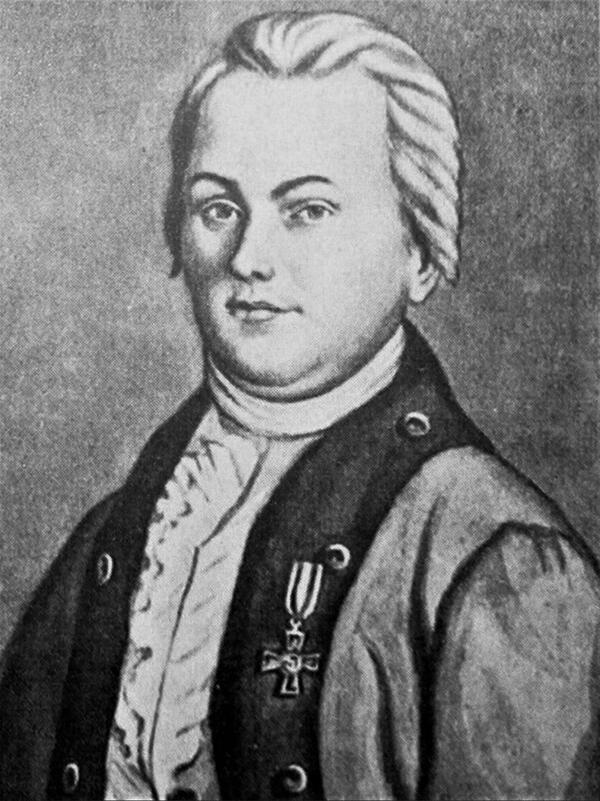This is a photocopy of a historic portrait depicting the Russian polymath, scientist, explorer, naturalist, and one of the pioneering researchers of BashkIr oil, Ivan Lepyokhin. Born into a family of a junior officer serving in the PreobrazhEnsky Life Guards Regiment, LepyOkhin had first studied at the Academic Gymnasium, before enrolling in the Academic University under the St. Petersburg Academy of Sciences. In 1762, he was sent to the University of Strasbourg to study medicine. At the time, he was exchanging letters with the famous Russian scientist Mikhail Lomonosov, who was preparing Lepyokhin to take the chair of botany at the Academy of Sciences.
Having graduated from the university with a doctorate in medicine in 1767, Lepyokhin returned to St. Petersburg, where he was appointed adjunct professor and secretary at the Academy of Sciences, before becoming an academician of natural sciences in 1771. From that point onwards, he began to take part in numerous expeditions aimed at studying the provinces of Russia from a naturalistic and ethnographic point of view. Between 1768 and 1772, he traveled across the Urals, the Volga region, Western Siberia, the Russian North, and Russia’s western provinces: sometimes he traveled alone, and sometimes in the company of the German scientist Simon Pallas. Whenever he returned from these expeditions, he brought extensive, for the time, botanical collections with him.
The notes Lepyokhin took during his travels later served as the basis for his book “Daily Notes of Travel in Various Provinces of the Russian State.” To this day, they are essential to the study of mammalian zoology, as they provide valuable data on the dispersal and lifestyle of a number of species, such as the tarpan, the saiga, and the beaver. Furthermore, Lepyokhin expanded the collection of the Academy of Sciences with a large number of mammal specimens. In 1774, he became the head of the Imperial Botanical Garden in St. Petersburg.
Lepyokhin left us one of the first pieces of documentary evidence indicating the presence of oil in Ishimbay. In particular, he mentioned it in his book when detailing his visit to the BashkIr village of Kusyapkulovo, which is presently a neighborhood in the city of Ishimbay. The scientist wrote: “There, our interest was piqued by a small spring of mountain oil that we happened across while digging the earth; we reached its very source at the depth of about an arshIn.” [1 arshIn equals 28 inches] He also described other oil sources located near the Belaya River, emphasizing that these sites should later be developed.
Having graduated from the university with a doctorate in medicine in 1767, Lepyokhin returned to St. Petersburg, where he was appointed adjunct professor and secretary at the Academy of Sciences, before becoming an academician of natural sciences in 1771. From that point onwards, he began to take part in numerous expeditions aimed at studying the provinces of Russia from a naturalistic and ethnographic point of view. Between 1768 and 1772, he traveled across the Urals, the Volga region, Western Siberia, the Russian North, and Russia’s western provinces: sometimes he traveled alone, and sometimes in the company of the German scientist Simon Pallas. Whenever he returned from these expeditions, he brought extensive, for the time, botanical collections with him.
The notes Lepyokhin took during his travels later served as the basis for his book “Daily Notes of Travel in Various Provinces of the Russian State.” To this day, they are essential to the study of mammalian zoology, as they provide valuable data on the dispersal and lifestyle of a number of species, such as the tarpan, the saiga, and the beaver. Furthermore, Lepyokhin expanded the collection of the Academy of Sciences with a large number of mammal specimens. In 1774, he became the head of the Imperial Botanical Garden in St. Petersburg.
Lepyokhin left us one of the first pieces of documentary evidence indicating the presence of oil in Ishimbay. In particular, he mentioned it in his book when detailing his visit to the BashkIr village of Kusyapkulovo, which is presently a neighborhood in the city of Ishimbay. The scientist wrote: “There, our interest was piqued by a small spring of mountain oil that we happened across while digging the earth; we reached its very source at the depth of about an arshIn.” [1 arshIn equals 28 inches] He also described other oil sources located near the Belaya River, emphasizing that these sites should later be developed.



